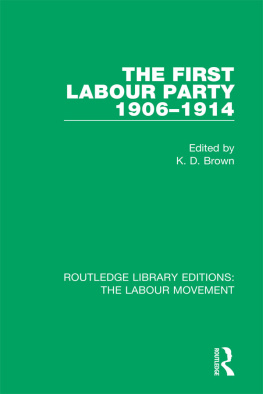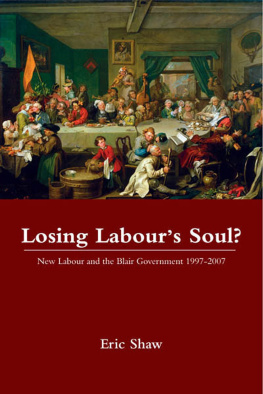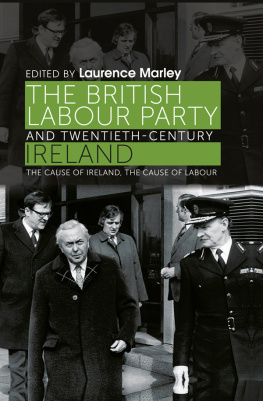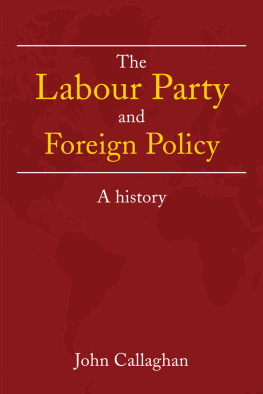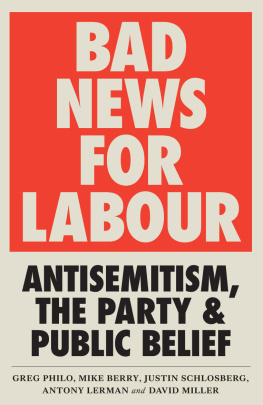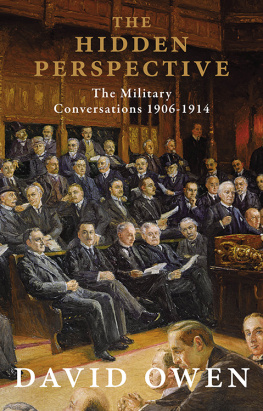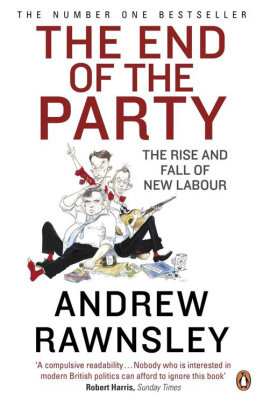ROUTLEDGE LIBRARY EDITIONS:
THE LABOUR MOVEMENT
Volume 4
THE FIRST LABOUR PARTY
19061914
THE FIRST LABOUR PARTY
19061914
Edited by
K. D. BROWN
First published in 1985 by Croom Helm Ltd
This edition first published in 2019
by Routledge
2 Park Square, Milton Park, Abingdon, Oxon 0X14 4RN
and by Routledge
711 Third Avenue, New York, NY 10017
Routledge is an imprint of the Taylor & Francis Group, an informa business
1985 K. D. Brown and Contributors
All rights reserved. No part of this book may be reprinted or reproduced or utilised in any form or by any electronic, mechanical, or other means, now known or hereafter invented, including photocopying and recording, or in any information storage or retrieval system, without permission in writing from the publishers.
Trademark notice: Product or corporate names may be trademarks or registered trademarks, and are used only for identification and explanation without intent to infringe.
British Library Cataloguing in Publication Data
A catalogue record for this book is available from the British Library
ISBN: 978-1-138-32435-0 (Set)
ISBN: 978-0-429-43443-3 (Set) (ebk)
ISBN: 978-1-138-32685-9 (Volume 4) (hbk)
ISBN: 978-0-429-44960-4 (Volume 4) (ebk)
Publishers Note
The publisher has gone to great lengths to ensure the quality of this reprint but points out that some imperfections in the original copies may be apparent.
Disclaimer
The publisher has made every effort to trace copyright holders and would welcome correspondence from those they have been unable to trace.
The First
LABOUR PARTY
19061914
Edited by K. D. Brown
CROOM HELM
London Sydney Dover, New Hampshire
CONTENTS
1985 K. D. Brown and Contributors
Croom Helm Ltd, Provident House, Burrell Row,
Beckenham, Kent BR3 1AT
Croom Helm Australia Pty Ltd, First Floor,
139 King Street, Sydney, NSW 2001, Australia
British Library Cataloguing in Publication Data
The First Labour Party 19061914.
1. Labour Party (Great Britain) History
I. Brown, Kenneth D.
324.2410709 JN1129.L32
ISBN 0-7099-3209-X
Croom Helm, 51 Washington Street, Dover,
New Hampshire 03820, USA
Library of Congress Cataloging in Publication Data applied for.
Printed and bound in Great Britain by
Biddles Ltd, Guildford and Kings Lynn
On the eve of the first world war Philip Snowden, Labour MP for Blackburn since 1906, was feeling somewhat disenchanted with political life and with the prospects of his own party in particular. The present labour representation in parliament, he wrote, is there mainly by the goodwill of the Liberals, and it will disappear when that goodwill is turned into active resentment. General disappointment at Labours failure to exert a continued pressure on government surfaced among party activists at annual conferences after 1908, appeared in print in manifestos such as is the Parliamentary Party a Failure? (1908) and Let Us Reform the Labour Party (1910), and resulted ultimately in the defection of several branches of the ILP to the newly established British Socialist Party (1911).
It seems worthwhile, therefore, to examine the state of the Labour Party on the eve of war to see how justified were its leaders apprehensions about the future. This will also throw further light on the still unresolved question of the extent to which the party had begun effectively to oust the Liberals in the years before war so fundamentally altered the nations social and political climate. Such analyses have often been undertaken in terms of Labours electoral performances before 1914 but the essays in the first half of this book set out to follow a different line, concentrating on aspects of the partys physical and regional organisation. In May 1912 a scheme was adopted for the regular appointment of local agents controlled by head office, and a system to channel financial aid to local party organisations was also established. But such organisational initiatives were not universally successful. As Dr Fraser shows below, Londons intervention was not always welcome in Scotland where local initiative seems to have played a more significant role in such expansion as did occur before 1914. This is perhaps not surprising, given the independent line usually adopted by the Scots, but local activists were similarly important elsewhere, though several of the essays provide salutary reminders that effort and enthusiasm are not always the same as achievement. Elsewhere, there were areas where the party barely existed as a distinctive political entity at all. This was true of rural areas, which were long to remain a source of Labour weakness, and also of London. Such was the hold exerted on the capitals fragmented trade unions by the Social Democratic Federation via the London Trades Council that it was not until 1914 that a London Labour Party appeared.
The importance of dedicated local party support was enhanced by the fact that Labour apparently could not rely on the support of a specific political constituency, even among trade unionists. It has long been recognised that while the party was essentially the creation of the unions, rank and file support for it was frequently lukewarm if that. When in September 1899 the TUC conference discussed the establishment of a Labour Party, most of the support came from delegates representing more recently organised workers, although several of the older unions had by then come under the influence, if not the control, of officers who were also members of the ILP, the body most vociferous in support of an independent line. Among the rest, however, there was considerable suspicion of the likely socialist influence within the new party. Consequently, the resolution calling for a special meeting of the unions, co-operative societies, and socialist organisations to make plans for labour representation in Parliament was only passed by 546,000 votes to 434,000. A substantial number of delegates apparently abstained from voting at all. When the inaugural meeting of the Labour Representation Committee assembled at the Memorial Hall in Faringdon Street the following year, union representation was thus relatively small. By 1902 only 455,450 out of a total of some two million trade unionists were affiliated to the party. This was changed dramatically by the impact of the verdict in the Taff Vale case. Since it was the House of Lords which was ultimately responsible for this decision to treat unions as corporate entities, thereby rendering their funds liable to claims for damages, it followed that the judgement could only be changed by altering the law itself. This gave an impetus to the idea of independent parliamentary representation and by 1904 trade union affiliations had soared to 956,000. As L.T. Hobhouse neatly put it: That which no Socialist writer or platform orator could achieve was effected by the judges. Even when an act of 1913 permitted the levy to be restored after a ballot among union members some of the unions returned sizeable minorities against it.
In some areas it is possible, as Dr Stead argues was the case in Wales, that rising industrial tension in the years after 1910 resulted in some shift of support towards Labour among trade unionists. Certainly the number affiliated to the party climbed to one and a half million by 1914, while the Lib-Lab element in Parliament had been pretty well squeezed out. On the other hand, the first of these developments might simply have been the natural corollary of rising trade union membership. Nationally, the proportion of trade unionists affiliated to Labour levelled off at rather more than fifty per cent between 1910 and 1912, but by 1914 it had fallen back to thirty-eight per cent, lower than it had been in 1903. This seems to reflect in part at least the inability of the fledgling political organisation to capitalise very fully on what some regarded as its natural locus of support. It is perhaps significant, therefore, that it was in this period of industrial unrest and union expansion that the party made a further bid for organisational expression by establishing its own newspaper. The Daily Citizen appeared in 1913 as the official organ of party policy. As such, it was dull and cautious. It was indicative of the tensions within the labour alliance that the militants persevered with the more provocative Daily Herald , which attracted an able team of writers and a first rate cartoonist in Will Dyson. Neither paper, however, was commercially successful. The Citizen became an early casualty of the war and the Herald only survived as a weekly. Deain Hopkins survey of the labour press reveals clearly the enormous difficulty Labour experienced in raising finance for large scale publishing ventures. Such enterprises seem to have been less significant in this period than the plethora of small, local papers which did much to weld together local supporters, giving them a sense of purpose and identity.



